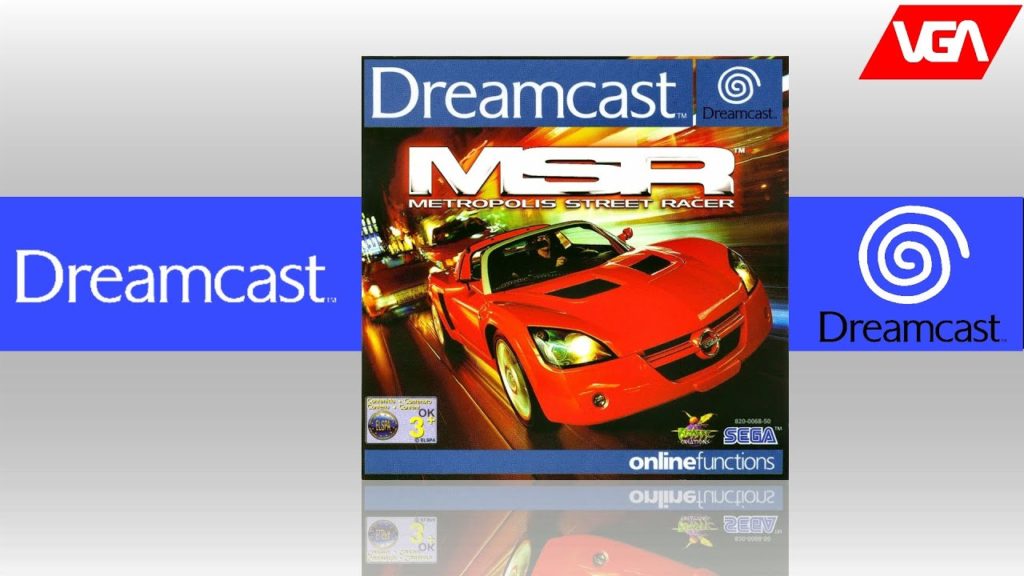Developer : Sega
Release date : November 3, 2000
Synopsis :
Metropolis Street Racer (MSR) is a racing video game developed by Bizarre Creations and published by Sega exclusively for Dreamcast. The game was intended to be a Dreamcast launch title, however, due to numerous delays it was not released in Europe until November 2000, with a North American version following in January 2001. A Japanese version was in development and briefly offered for online reservation in January 2001 with an expected release date of 22 February 2001, but ultimately canceled after Sega discontinued support for Dreamcast. The game is the first entry in Bizarre Creations’ Project Gotham Racing series.
As well as being an early example of an open world racing game, Metropolis Street Racer is notable for introducing the “Kudos” system (whereby players are rewarded for racing stylishly as well as quickly) into video games, and for its detailed and accurate recreations of the cities of London, Tokyo and San Francisco. Music for the game was composed by Richard Jacques, and delivered via nine fictional radio stations (three for each city), similar to the Grand Theft Auto series. The day/night time spectrum during game play is realistic, in that the game uses the internal clock of the Dreamcast to calculate the present time in each city. Play at 8AM in England, for example, and the San Francisco races will all be at night (12 AM).
A selling point of Metropolis Street Racer was the large number of tracks available (262 in total), created by blocking off certain areas of the city to lead the player around specific roads and paths. However, only a small number are available at the start of play and most are unlocked by playing through the single player mode.
Kudos (from Greek κῦδος, meaning ‘praise’ or ‘glory’) is the currency of MSR. It is earned during the challenges in two categories – Skill and Style. Skill Kudos are earned by completing a challenge successfully. The difficulty of challenges is user-configurable – for example, reducing the time limit, or increasing the head start of opponents – with harder challenges rewarding more Kudos for completion. Style Kudos are earned by drifting – using the hand-brake to skid while turning. A “K” symbol appears when drifting, and becomes brighter the longer and more pronounced the drift is. The more opaque the symbol, the more Kudos earned. Kudos are also awarded for finishing a race without colliding with obstacles or other cars. Kudos are lost if the driver collides with a wall, obstacle or other car (theoretically Kudos are not lost if another car collides with the player, but this is not always the case); or by failing the challenge, which results in a final Kudos total of -25 “K” for the whole challenge. Cancelling a challenge will even result in -50 “K”.
Kudos are calculated on a per-challenge basis. Each challenge’s Kudos result is stored, and only the last attempt at a challenge is stored. If, for example a challenge is completed with 250 “K”, then subsequently attempted unsuccessfully, that challenge’s result becomes -25 “K”.
Through playing the game, “Joker” cards may be earned. Playing one of these cards before starting a challenge will double the amount of Kudos gained or lost during that attempt.
Source : Wikipedia


